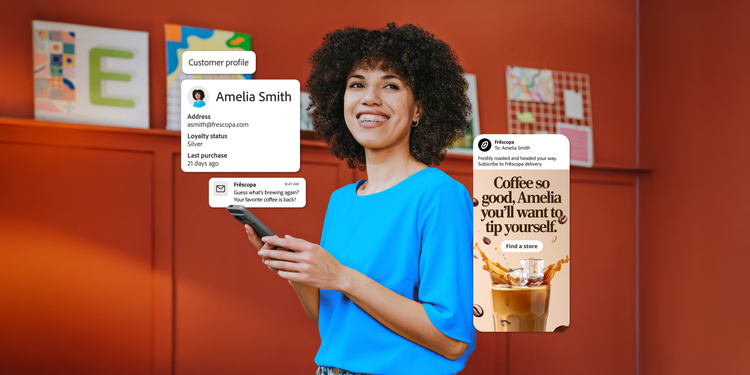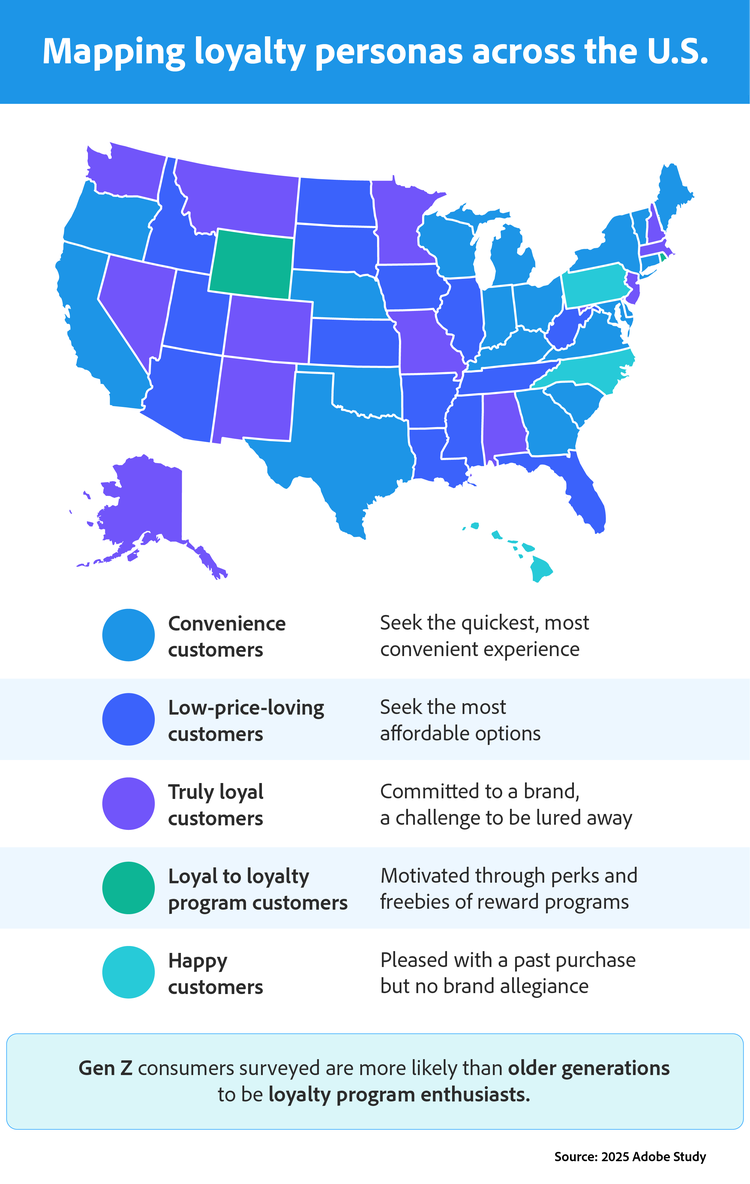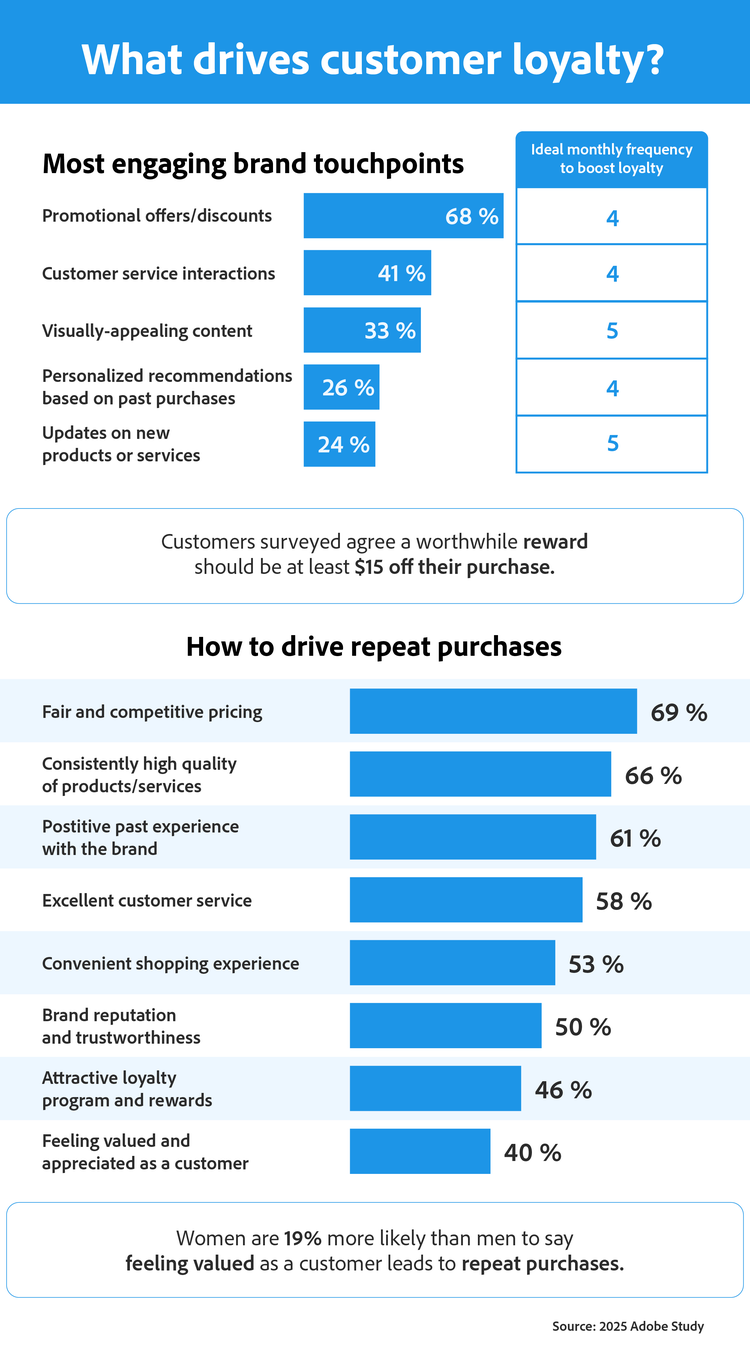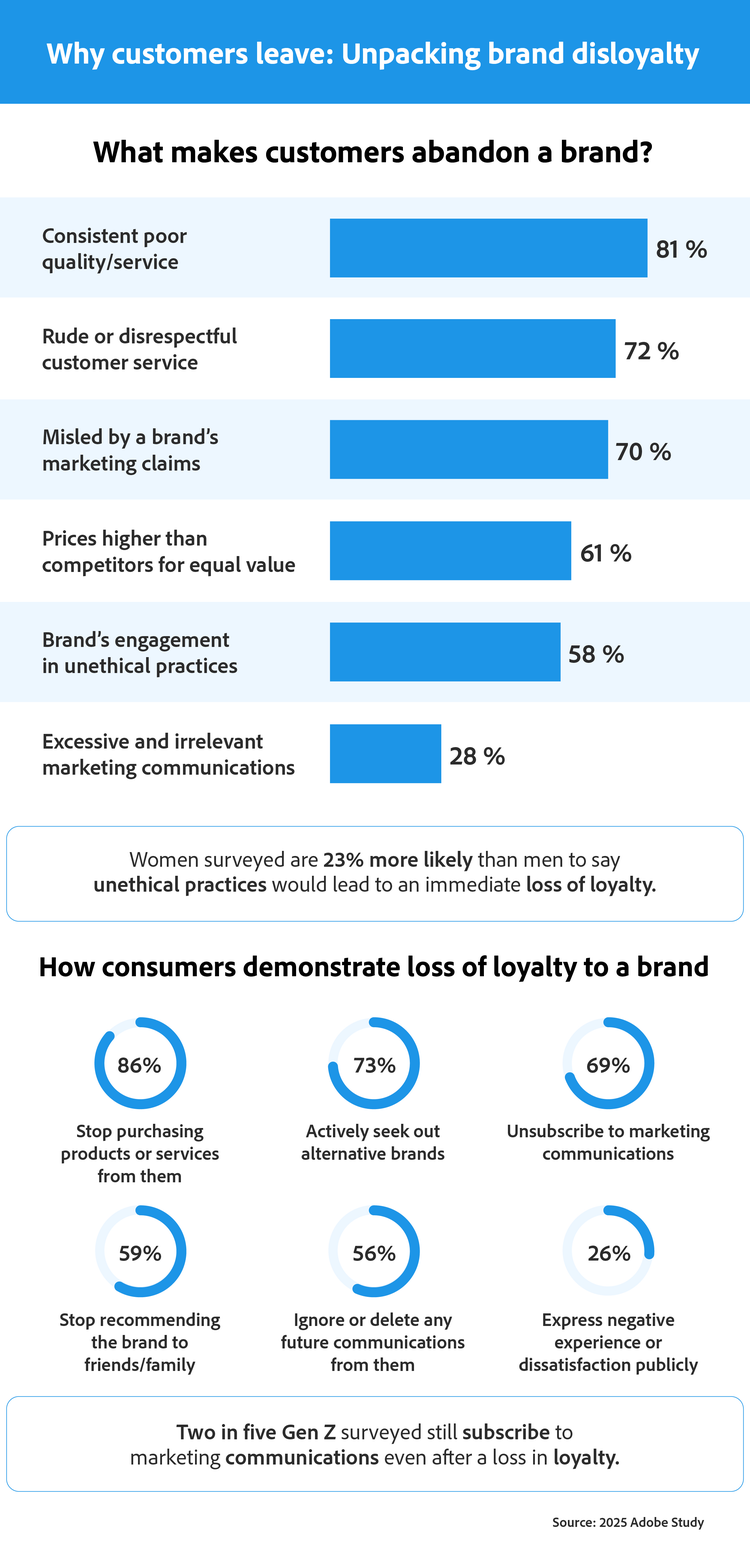To understand what keeps customers coming back in 2025, we surveyed 1,003 consumers across the US. What emerged is a clear shift in loyalty dynamics — it’s increasingly driven by personalization, relevance, and consistency across every touchpoint.
Key findings.
-
69% of consumers cite fair, competitive pricing as their top reason for repeat purchases.
-
92% of respondents identify as convenience-oriented shoppers — the largest loyalty persona group.
-
90% are price-driven, especially Millennials and Southern US consumers.
-
81% of consumers would leave a brand over poor product or service quality.
-
72% would walk away after rude or unhelpful service, and 70% due to misleading claims.
-
58% say unethical behavior is a dealbreaker — women are 23% more likely than men to cite this.
-
Regional reward expectations vary:
- $22 minimum discount expected in California
- $24 in Texas
- Under $10 is acceptable in Florida
-
A mere 5% increase in retention can drive 25%+ in profit growth.
-
86% stop buying after loyalty is broken, and 25% of Gen Z take their complaints public.
-
Most consumers prefer 4–5 brand interactions per month, making cadence and personalization essential.
-
79% engage with loyalty programs — especially women and customers in states like Wyoming and Rhode Island.
These numbers paint a clear picture — loyalty isn’t guaranteed. So, what’s changed and what do customers expect now?
Before we explore today’s loyalty drivers and dealbreakers, let’s get clear on what customer loyalty really means.
In 2025, customer loyalty is more than a marketing metric — it’s a C-suite priority. With acquisition costs rising and market volatility high, enterprise leaders are turning to loyalty as a lever for profitability, predictability, and brand resilience.
Today’s consumers have more choice than ever. Churn is frictionless, and loyalty can no longer be earned with quality alone. Consumers now expect competitive pricing, standout service, and relevant, timely communication.
This post will cover:
- What is customer loyalty?
- Meet the five customer loyalty personas.
- What drives customer loyalty today?
- Why customers walk away
- Why loyalty is worth the investment.
- How to measure loyalty
- How to increase customer loyalty
- How loyalty programs keep customers coming back
- Get started with loyalty that scales





